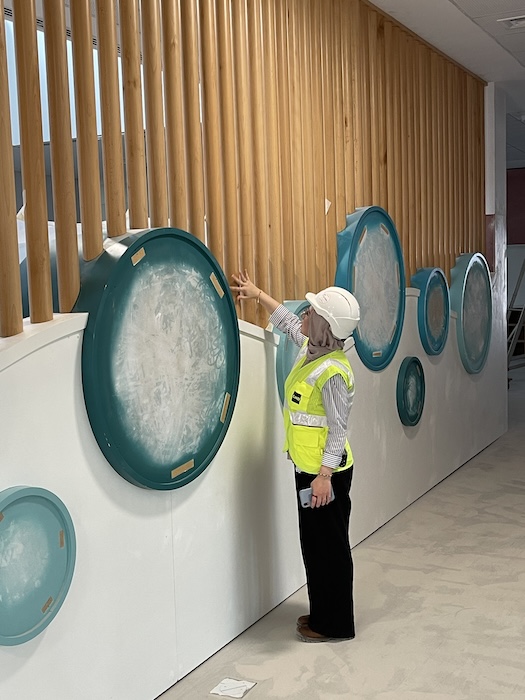
The psychological safety equation
February 7, 2024
By Julie Cafley and Sadaf Parvaiz
There can be no safety without inclusion.
We see plenty of hard hats, steel-toed boots and neon vests on the frontlines of the construction and energy sectors—all gear to keep workers safe—but what about the protocols we can’t see?
Psychological safety has yet to make it into most consulting engineering firms’ health and safety plans. When this foundational piece of an organization’s culture is missing, leaders should question whether they even have an accurate accounting of incidents or potential job-site risks.
Researcher and professor Amy Edmondson coined the term ‘psychological safety’ to describe work environments where employees feel they can be honest and speak up with ideas, questions and concerns about mistakes. Her research shows organizations with high levels of psychological safety benefit from more innovation, better individual and team well-being, greater learning and development and stronger resilience.
At the core of creating this feeling of safety is inclusion.
Addressing the hierarchy of needs
We heard about the experiences of a recent petroleum engineering graduate, responsible for controls of an on-site drilling operation. Working overnight in a remote location was part of the job, but proved more challenging than anticipated. As the only woman in the middle of nowhere, facing a long walk in total darkness to use the toilet, the engineer was overcome with fear for her safety.
Her fear was not unfounded, given Catalyst research shows women face increased harassment when working in male-dominated industries.
In 2022, a Catalyst report on the energy sector found women had accounted for 18.7% of the labour force in the oil and gas extraction, mining and quarrying industries in 2021. People of colour also accounted for a small share of Canada’s energy sector in 2019, with 18% identifying as visible minority and 5% as Indigenous.
Speaking up is more challenging when you’re the only woman or person of colour, because you already face other barriers. Suppose employees like the aforementioned engineering graduate do not feel included at the most basic level, from having a place to use the bathroom that’s safe and well-lit to being provided protective equipment that fits. Women also still experience inappropriate jokes, off-hand comments and situations where their view is not valued like their male colleagues’. In those cases, they will not likely feel safe bringing forward other issues.
Organizations stand to benefit from higher levels of psychological safety.
While the steps for improving workplace inclusion may seem obvious, legislation will force the issue. In Ontario, for example, a revised Construction Projects Regulation took effect on July 1, 2023, requiring new standards for construction washrooms and properly fitting gear for all body types.
Whether they are regulated or not, however, employers can signal they care by addressing basic needs and, in turn, employees can feel safer raising concerns.
While many organizations in these sectors already focus on safety as part of their values and mission statements, they may face more risk than they realize without fostering inclusion and psychological safety. Performance indicators often miss the negative effects on well-being, such as stress-related illness, absenteeism and loss of productivity due to emotional health impacts. When an organization celebrate 300 days without a safety incident, are its metrics really accurate?
Expanding the definition of safety
The solution to this issue is to expand the focus of health and safety plans to address inclusion. In addition to mandatory training about threats like live wires and corrosive chemicals, we must help all engineers feel they belong and are encouraged to speak up for themselves and in support of their colleagues.
Returning to the petroleum industry worker’s experience, what role could her colleagues have played in supporting her? Workplaces should prioritize training on allyship, encouraging those who know someone on their team is different in some way—and who see or hear something that negatively impacts them—to take an active role in advocating for them.
Safety is already an essential part of the culture in the engineering community; now it is time to expand the definition.
Julie Cafley is executive director of Catalyst, a global non-profit organization that advances inclusive workplaces. Sadaf Parvaiz is global enterprise inclusion and diversity leader for consulting engineering firm GHD and a member of Canadian Consulting Engineer’s editorial advisory board (EAB).
This article originally appeared in the January/February 2024 issue of Canadian Consulting Engineer.
